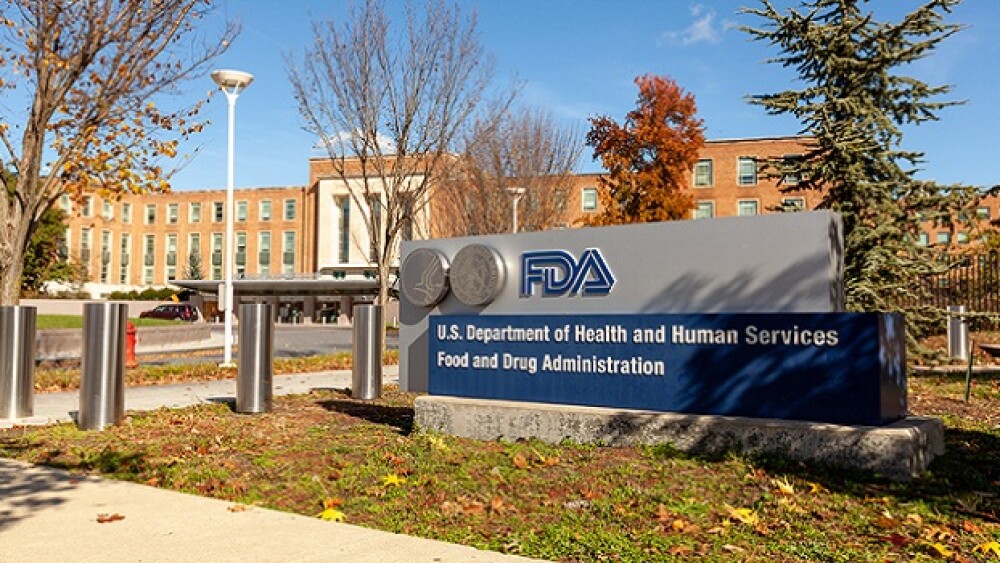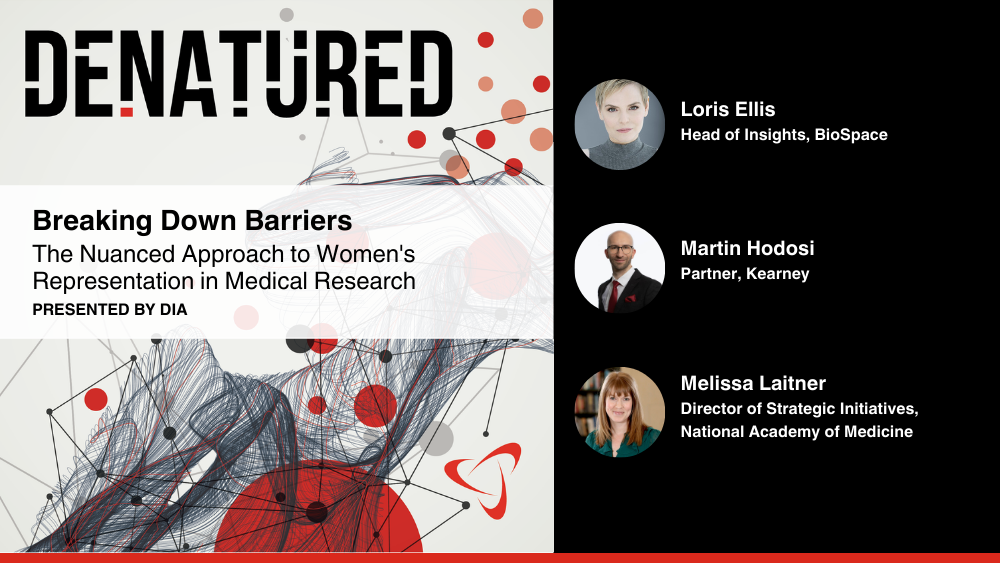With Eisai and Biogen’s Leqembi now fully approved, researchers are exploring combinations—including with therapies targeting tau and microglial function—that could increase its effectiveness.
A scientific analysis of Alzheimer’s disease/istock, digicomphoto
When Eisai and Biogen’s Leqembi (lecanemab) received full approval this month, it was widely viewed as the beginning of a new chapter in Alzheimer’s treatment. But with hurdles still to clear and a marginal efficacy rate, experts say there is still a ways to go in the space—and the next step could involve combination trials.
Eisai intends to pair Leqembi with other drugs in its pipeline. Still, it is also open to partnering with other companies to advance treatments for the disease, said Michael Irizarry, the company’s head of Alzheimer’s research. “Our conception of lecanemab is that it would be the backbone anti-amyloid therapy for combination treatments, and that’s the strategy that we’re considering at Eisai,” he told BioSpace.
Irizarry said several possible rational combinations exist, including doubling up on the amyloid pathway. “For instance, if there’s a small molecule that can reduce the production of amyloid beta, it might allow you to reduce the dose of antibodies that clear amyloid beta and may allow a better safety profile.
“The other approach is to target amyloid and one of the other processes that is ongoing,” he said.
Graig Suvannavejh, senior biopharmaceuticals and biotechnology equity research analyst at Mizuho Americas agreed that combination therapies are likely the way of the future for Alzheimer’s.
“With the approval of Leqembi . . . the stage for combination approaches is set,” he told BioSpace. “So now you can layer on something else on top of Leqembi . . . perhaps you could have a synergistic effect or additive efficacy that you could not achieve with one drug alone.”
Tau Combinations
The leading theory holds that Alzheimer’s disease is caused by the accumulation of two proteins—amyloid beta and tau—in the brain. So, one potential Leqembi combination is that with a drug targeting tau, Irizarry said.
Eisai is developing E2814, an anti-tau antibody intended to prevent the spread of tau seeds within the brain. E2814 is directed against the microtubule-binding region (MTBR) of the tau protein, which Irizarry said is a component of the tau seed believed to drive the trans-neuronal spread of neurofibrillary tangles.
The candidate is being tested in a Phase II/III trial that uses lecanemab as the base therapy. Participants in the study—being conducted in concert with Washington University School of Medicine’s Dominantly Inherited Alzheimer Network Trial (DIAN-TU)—are given lecanemab, then randomized after six months to receive either E2814 or placebo.
Irizarry said this study design highlights two key points when investigating combination therapies. One is the study population. “At what stage of the disease do you use combinations?”
A second consideration is how to sequence therapies and “whether to do full factorial trials or other types of designs,” Irizarry said. For example, in the DIAN-TU trial, “the timing of when we use lecanemab differs based on the stage of disease.”
The Alzheimer’s Clinical Trial Consortium (ACTC), funded by the NIH, has announced a platform trial to test multiple tau therapies alone or combined with an anti-amyloid drug. Questions posed by ACTC include when in the course of the disease tau treatment effects can be measured, who to enroll and what effect size correlates with a clinically meaningful response to treatment. Although the ACTC has not stated which anti-amyloid drug it will use in the new trial, the consortium is already collaborating with Eisai on the AHEAD 3-45 trial, which is testing Leqembi in individuals at risk of developing Alzheimer’s due to elevated levels of amyloid.
Neurodegeneration and Neuroinflammation
Another possible Leqembi combination, Irizarry said, is with a drug directly targeting neurodegeneration. Eisai has two such molecules currently in Phase I. One, E2025, is focused on the nerve growth factor pathway and preventing cholinergic cell loss. A second, E2511 aims to promote recovery and synaptic remodeling of damaged cholinergic neurons and suppress cerebral atrophy caused by neurodegeneration.
Irizarry said it “makes sense to combine an amyloid therapeutic with a therapeutic that’s trying to prevent neurodegeneration [because] targeting multiple pathways is a fundamental concept in selecting combinations to get stronger effects.”
Another potentially synergistic target is neuroinflammation. Several studies posit that neuroinflammation—particularly microglial dysfunction—plays an important role in the Alzheimer’s disease process. John Hardy, group leader at the U.K. Dementia Research Institute, told BioSpace that this an area ripe for combination trials, with Leqembi and drugs that “increase, in some way, microglial function.”
This could include agonists of TREM2 and drugs that mimic PLCG2, he said. TREM2 is necessary for microglial homeostatic maintenance and responses to inflammatory damage in the central nervous system. Variants of the gene underlying this protein are a genetic risk factor for Alzheimer’s disease. PLCG2 is a phospholipase-encoding gene expressed in microglia that has also been linked to the pathology of the disease. Conversely, the P522R variant of PLCG2, which is expressed by microglia, has shown protective effects against developing late-onset Alzheimer’s in mouse studies.
Irizarry agreed, saying, “There’s is a lot of interest in therapies that are targeting inflammatory processes, and in particular, microglial function.” He cautioned, however, that if these therapies are combined with a drug like Leqembi that activates microglia—specifically to mediate the clearance of amyloid—“you have to make sure that the way the two drugs work aren’t counteracting themselves.”
Early Intervention
Alvaro Pascual-Leone, a professor in neurology at Harvard Medical School and medical director at the Wolk Center for Memory Health at Hebrew SeniorLife, said that while Leqembi’s disease-modifying effect “is great, it is not a cure. You’re still going full tilt down the road, just not at 70 miles an hour but at 50.”
Pascual-Leone said that anti-amyloid therapies “ought to be a catalyst for change for how we approach dementia care.” Specifically, he said they emphasize “the critical importance of early diagnosis” to determine the root cause of cognitive impairment at an individual level. “In my mind, the early interventions have to seriously consider combination therapeutics,” he said.
It doesn’t necessarily have to be a combo with another drug, though, he added. “We know that [anti-amyloid] medications can change the course of disease progression, maybe by 25 to 35%. But we also know that lifestyle modification can change the course of the disease by 40% plus. There is no reason to believe that you cannot have some synergistic effect if you do both.”
Pascual-Leone said the next chapter in Alzheimer’s treatment is a more holistic, personalized approach that looks at combination therapies to optimize benefits and reduce risk.
Suvannavejh agreed. “There are opportunities to have a better version of Leqembi . . . but I think the real excitement from my perspective is how much combination approaches now can move forward. That is definitely the future.”
Heather McKenzie is a senior editor at BioSpace. You can reach her at heather.mckenzie@biospace.com. Follow her on LinkedIn and Twitter @chicat08. Reporting contributed by Jef Akst.






